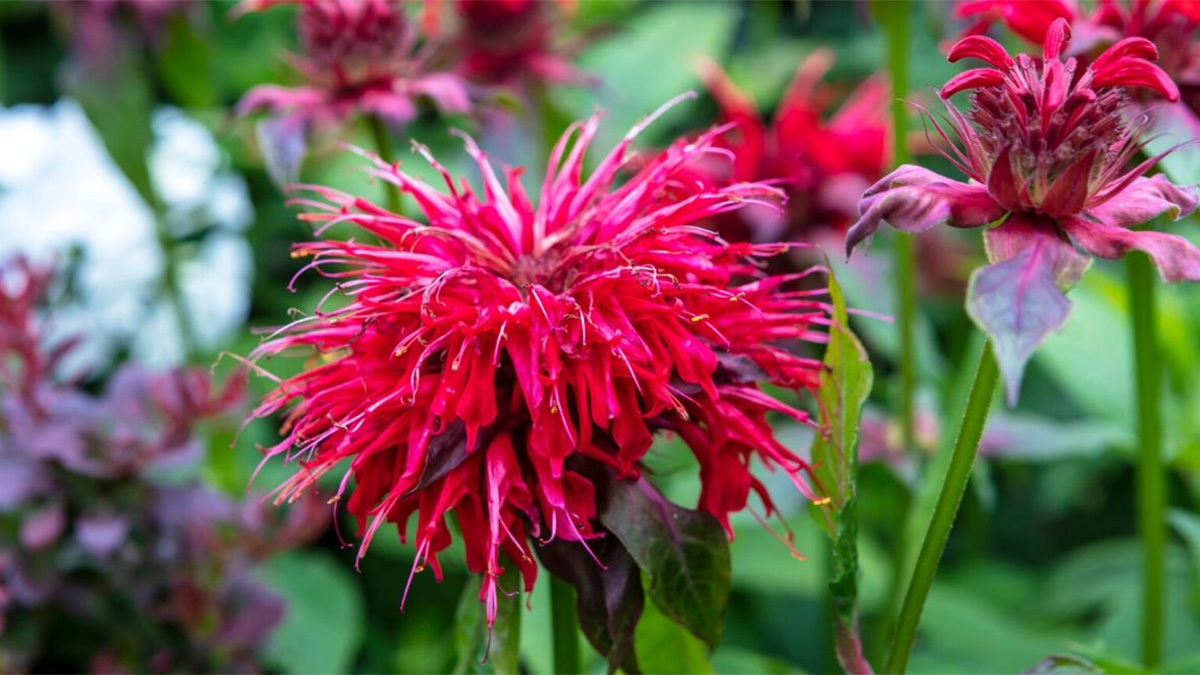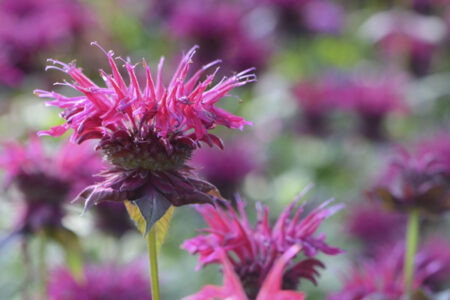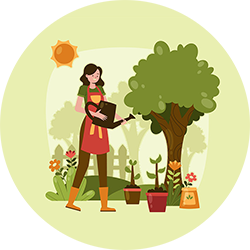How to Grow Bee Balm (Monarda) for Beauty and Herbal Healing

Bee balm (Monarda) is a stunning herb that adds bold color to garden beds while offering a range of traditional herbal uses. With its vibrant blooms and minty aroma, it attracts pollinators and gardeners alike. Whether you’re growing it for its striking looks or soothing properties, bee balm is a rewarding and versatile plant to include in your garden.
What is bee balm (Monarda)?
Bee balm, also known as Monarda, is a vibrant perennial herb native to North America. It’s best known for its showy flowers that come in shades of red, pink, purple, and white, as well as its minty fragrance. Bee balm blooms in mid to late summer and is a favorite among bees, butterflies, and hummingbirds.
There are several species of Monarda, with Monarda didyma and Monarda fistulosa being the most common in gardens. Monarda didyma features bright red flowers and thrives in moist, rich soil, while Monarda fistulosa produces softer purple blooms and is more drought-tolerant. Both types have been traditionally used in herbal medicine by Native American communities.
Bee balm also goes by other names such as bergamot, wild oregano, and Oswego tea. The name “bergamot” refers to the plant’s citrus-like scent, which is reminiscent of bergamot orange. Despite its nickname, it is not related to the bergamot fruit used in Earl Grey tea.
Why grow bee balm?
Ornamental appeal
Bee balm adds instant charm to flower beds and borders with its tufted, firework-like blooms. Its vibrant colors create a striking visual display and provide height and texture to mixed plantings. Beyond aesthetics, bee balm draws a steady stream of pollinators, making it ideal for wildlife and pollinator gardens.
The plant’s long blooming season ensures color through much of the summer. Its upright stems and clustered flowers pair well with other prairie or cottage-style plants. Even after blooming, its seed heads offer visual interest and food for birds in fall.
Herbal benefits
Bee balm has a long-standing reputation as a medicinal herb. Its leaves and flowers contain thymol, which offers antimicrobial and antiseptic properties. Historically, it was used to treat colds, fevers, and digestive issues.
The leaves can be brewed into a tea that helps ease sore throats, upset stomachs, and respiratory congestion. It can also be made into salves or infused oils for topical use on minor skin irritations. For anyone interested in natural remedies, bee balm is a valuable addition to the home garden.

How to grow bee balm (step-by-step)
Choosing the right location
Bee balm prefers full sun but can tolerate partial shade, especially in hot southern climates. The plant thrives when it receives at least six hours of sunlight a day. If grown in too much shade, it may produce fewer blooms and become leggy.
Good air circulation is important to prevent powdery mildew, a common issue with bee balm. Avoid crowding plants too closely, and choose a location where air can freely move around the foliage. Raised beds or open garden borders work well.
Soil requirements
Bee balm grows best in rich, well-draining soil with a pH between 6.0 and 7.0. The soil should retain moisture but not become waterlogged. If your soil is heavy clay or too sandy, amending it with compost will improve its structure and fertility.
Adding organic matter not only boosts nutrients but also helps retain moisture during dry periods. A soil test can help determine if any additional amendments are needed before planting. Mulching with shredded bark or straw also helps regulate soil temperature and moisture levels.
Planting bee balm
You can grow bee balm from seed, divisions, or nursery-grown plants. If starting from seed, sow indoors in late winter or directly into the garden in early spring. Transplants can be planted in spring or early fall when the weather is mild.
Space bee balm plants about 18 to 24 inches apart to allow for growth and airflow. Dig a hole twice as wide as the root ball and plant at the same depth it was in its container. Water thoroughly after planting and keep the soil evenly moist during establishment.
Watering and feeding
Bee balm needs regular watering, especially in its first year and during dry spells. Aim to keep the soil moist but not soggy. Once established, the plant is moderately drought-tolerant but still benefits from consistent moisture.
Fertilizing bee balm isn’t always necessary if the soil is rich. However, a light application of balanced, slow-release fertilizer in early spring can encourage strong growth and flowering. Avoid over-fertilizing, as it may lead to excessive foliage at the expense of blooms.
Pruning and maintenance
To encourage prolonged blooming, remove spent flowers regularly. Deadheading prevents the plant from going to seed too early and keeps it looking tidy. After the first flush of blooms, a light trim can stimulate new growth.
At the end of the season, cut stems back to a few inches above the ground once the plant dies back. Every two to three years, divide overcrowded clumps in early spring or fall. This rejuvenates the plant and reduces the risk of mildew.
Common pests and problems
Powdery mildew is the most common issue with bee balm, especially in humid conditions or crowded plantings. Prevent it by ensuring good air circulation and watering at the base of the plant. If needed, use an organic fungicide or neem oil.
Bee balm is generally pest-resistant but may occasionally attract aphids or spider mites. These can be treated with a strong spray of water or insecticidal soap. Deer tend to avoid bee balm, making it a good choice for gardens in deer-prone areas.
Harvesting and using bee balm for herbal healing
When and how to harvest
Harvest bee balm in mid to late summer when the plant is in full bloom. The best time to pick is in the morning after the dew has dried but before the midday heat. Both the leaves and flowers are useful for herbal purposes.
Use clean scissors or garden snips to cut stems just above a leaf node. Select healthy, unblemished foliage and flowers for the best flavor and potency. Avoid harvesting more than one-third of the plant at a time to keep it vigorous.
Drying and storing
Bundle small bunches of bee balm and hang them upside down in a dry, dark, and well-ventilated area. Once the leaves and petals are completely dry, strip them from the stems and store them in an airtight container away from light.
Properly dried bee balm retains its aroma and medicinal properties for up to a year. Label your containers with the harvest date to track freshness. Avoid using plastic bags for long-term storage, as they can trap moisture.
Herbal uses and remedies
Bee balm makes a fragrant herbal tea that can soothe colds, sore throats, and digestive discomfort. Simply steep 1 to 2 teaspoons of dried leaves or flowers in hot water for 10 minutes. The tea has a mild, minty flavor with hints of citrus and spice.
You can also infuse bee balm in oil for use in salves or lotions. The infused oil can help treat minor cuts, rashes, and insect bites. For congestion, try a steam inhalation with bee balm leaves added to hot water to help clear nasal passages.
Bee balm can even be used to flavor honey, vinegar, or herbal syrups. These preparations are easy to make and offer both culinary and health benefits.
- 30+ Bee Balm Recipes – Adamant Kitchen
- 12 Ways to Use Bee Balm – Practical Self Reliance
- Recipes and Remedies Using Bee Balm – Herbal Academy blog
Creative garden ideas with bee balm

Bee balm is perfect for borders, wildflower meadows, and herb gardens. Its upright habit and vivid flowers make it a standout feature plant. Grouping several plants together can create a bold focal point in any sunny bed.
Pair bee balm with other pollinator-friendly perennials such as echinacea, black-eyed susan, and yarrow. These combinations create a colorful, low-maintenance display that supports biodiversity. Bee balm also complements ornamental grasses for a prairie-inspired look.
In medicinal herb gardens, bee balm fits beautifully alongside lemon balm, calendula, and chamomile. Whether in a formal layout or a relaxed cottage garden, this versatile plant brings both beauty and healing to your outdoor space.
Frequently asked questions
Is bee balm invasive?
Bee balm can spread vigorously by underground rhizomes but is not considered invasive in most home gardens. Dividing it every few years helps keep it in check. Container planting or root barriers can also help manage its growth.
Can I grow bee balm in containers?
Yes, bee balm can grow well in large containers with good drainage. Choose a pot that is at least 12 inches deep and wide. Regular watering and pruning will help it thrive in a confined space.
Is bee balm safe for pets?
Bee balm is not known to be toxic to cats or dogs, but it’s always best to prevent pets from chewing on garden plants. If you’re concerned, check with your veterinarian before using it in homemade pet remedies.
How long does bee balm live?
With proper care, bee balm can live for many years. Dividing it every two to three years keeps it healthy and productive. It’s a hardy perennial in USDA zones 3 to 9, tolerating a wide range of conditions with minimal fuss.
Conclusion
Bee balm offers more than just eye-catching color. It brings life to your garden, supports pollinators, and provides natural herbal remedies you can use at home. With the right care, this beautiful and beneficial plant will flourish for years to come, enhancing both your garden and your wellness routine.
